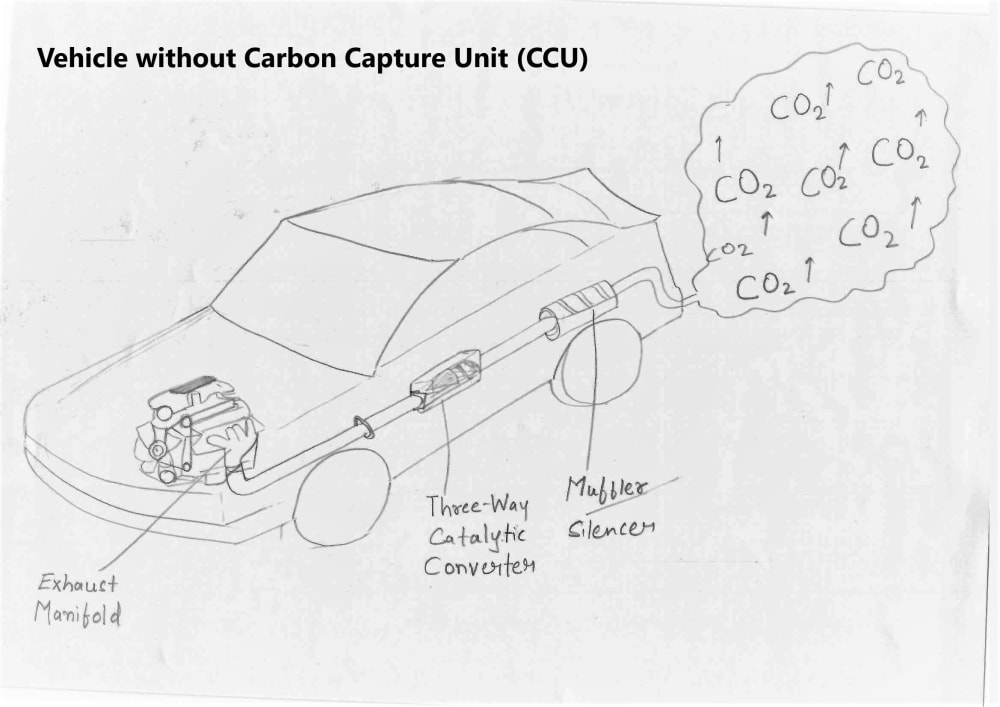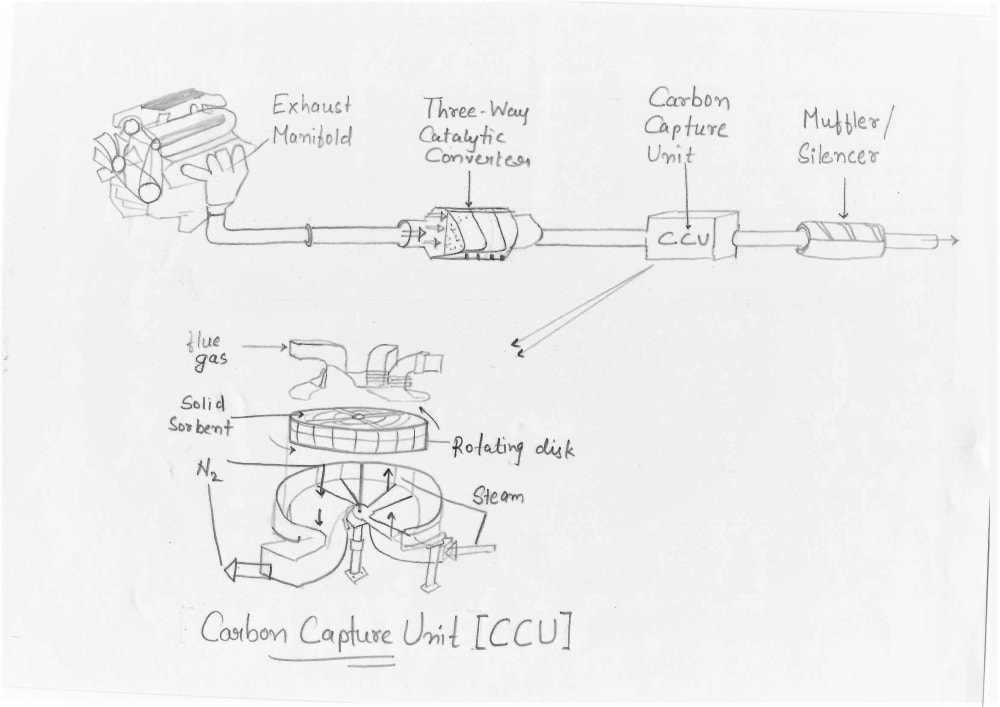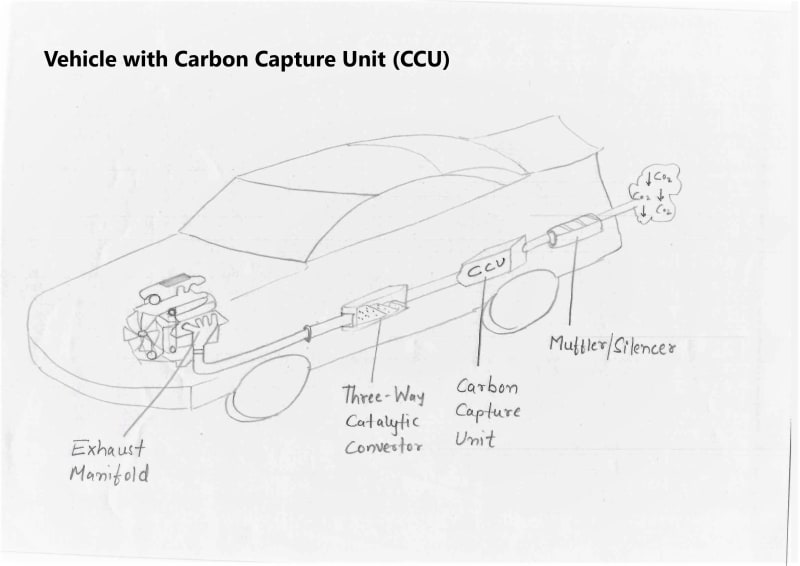The transportation sector is a major source of CO2 emissions, contributing to global warming and climate change. According to the International Energy Agency (IEA), this sector is responsible for nearly a quarter of global energy-related CO2 emissions. The idea proposed here is a novel Carbon Capture and Utilization (CCU) system integrated into vehicles aimed at actively reducing carbon dioxide (CO2) emissions from the atmosphere while supporting sustainable practices.
Key Features:
- Direct Air Capture Technology:
• Incorporates advanced CO2 capture technology directly within the vehicle's exhaust system.
• Utilizes sorbent materials or chemical processes to selectively capture CO2 from the exhaust gases. - Carbon Utilization and Conversion:
• Converts captured CO2 into valuable products or fuels using catalytic converters or electrochemical processes.
• Examples include synthesizing methanol, ethanol, or other hydrocarbons for onboard energy generation or storage. - Integrated Energy Cycle:
• Creates a closed-loop carbon cycle by utilizing the synthesized fuels to power the vehicle, thereby minimizing net carbon emissions.
• Ensures compatibility with existing internal combustion engines or fuel cell technologies. - Smart Control and Optimization:
• Implements smart sensors and control systems to optimize CO2 capture efficiency and fuel synthesis processes based on driving conditions and vehicle performance.
• Integrates with vehicle telematics for real-time monitoring and data analysis. - Scalability and Modular Design:
• Designs the system for scalability across different vehicle types and sizes.
• Enables modular installation to accommodate future advancements in carbon capture and utilization technologies. - Environmental and Economic Benefits:
• Significantly reduces vehicle carbon emissions, contributing to global carbon reduction goals.
• Promotes economic viability through the production of valuable products from captured CO2.
Advantages:
- Innovative Carbon Reduction: Provides a direct method to actively capture and utilize CO2 emissions from vehicles, contributing to carbon neutrality.
- Technological Leadership: Positions the vehicle as a mobile carbon capture unit, advancing sustainable transportation solutions.
- Market Potential: Opens new avenues for partnerships in carbon management and utilization industries.
- Patent Protection: Secures intellectual property rights for the unique combination of technologies and processes involved.
Patent Strategy:
- Unique Integration: Highlighting the exclusive integration of capturing, converting, and utilizing CO2 within a vehicle environment is a key aspect.
- Technological Process: The focus is on the specific methods and materials used for capturing and converting CO2.
- Utility and Applications: Showcases the practical applications and advantages of the system in reducing carbon emissions within the automotive industry and championing environmental stewardship.
Conclusion:
This innovative idea for a Carbon Capture and Utilization System for Vehicles represents a ground-breaking approach to combating carbon emissions from the transportation industry. By integrating advanced CO2 capture and utilization technologies into vehicles, this concept not only supports carbon reduction efforts but also unlocks new possibilities for sustainable mobility solutions and environmental advancement.
Further exploration of this concept would lead to significant advancements in carbon management technologies, propelling us toward a cleaner and more sustainable future for transportation and beyond.
Like this entry?
-
About the Entrant
- Name:Debjyoti Bandyopadhyay
- Type of entry:teamTeam members:
- Prasanna Sutar
- Shailesh Sonawane
- Sandeep Rairikar
- Sukrut Thipse
- Patent status:pending








